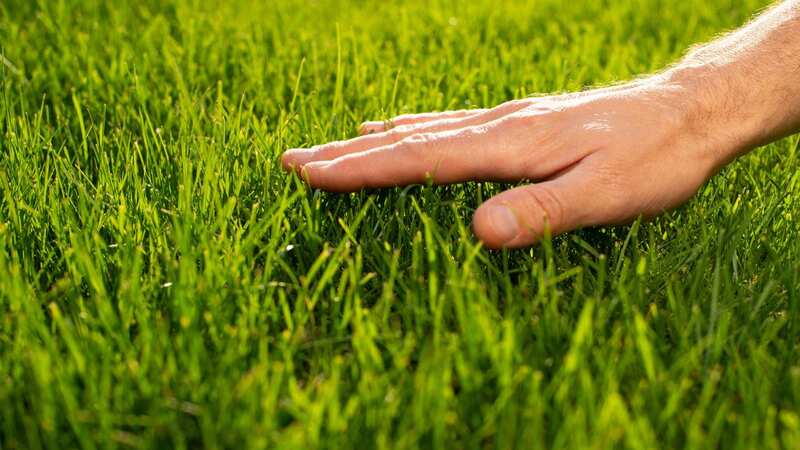Gardener's vital tip for repairing 'worn' grass in September to help it thrive

Summer is officially winding down meaning it's time for all the budding gardeners out there to start preparing for the coming cold months. Many of us know about the importance of deadheading and cutting back plants and flowers - but there's another very important job that needs doing at this time of year.
Green-fingered guru Monty Don has revealed it is the perfect time to either sow or turf new grass or repair worn areas on your lawn. For the latter, you must rake away all moss and remove weeds before scattering your grass seed.
Water it well and keep it damp and in a few days you should start to see the seeds germinate and grow. It's important, however, not to mow the area for at least a month - if it looks too unsightly as winter approaches, try clipping with garden shears instead.
For larger areas of worn grass, clean the edges with a sharp spade and fork it over before scattering grass seed or laying down turf, cut to size so the edges are butted up tightly against the existing grass around it.
Writing on his website, Monty reiterates that it's important that turf should not be walked on or mown until it starts to grow vigorously, indicating that the roots have properly taken. That could mean that you need to leave the new grass alone until spring arrives next year.
 Gardening expert shares exact date when you should cut grass after winter
Gardening expert shares exact date when you should cut grass after winter
There are several things you can to make sure your lawn survives the winter and it's important not to put too much stress on your lawn by cutting it too often or too short. Fiona Jenkins, gardening expert at MyJobQuote.co.uk, recently told the Express: "It's best to stop mowing your lawn in autumn. The last cut should be between late September and late October.
"The timeframes can vary depending on your location in the UK and the climate in your area. For a more accurate timeframe, I would advise you to pay close attention to your lawn to determine when is best for the last cut, the pro said. The first frost of the year is normally a "clear sign" that your mower can go into hibernation. You will notice that your grass is growing more slowly and therefore doesn't need cutting as often or at all.
In the UK, the first frost normally forms between late October and early November. The last frost is between late March and early April. Fiona said there are some jobs Britons can do now to make sure their lawns are "flourishing" next year. She explained: "For the last cut of the season, you want to make sure you cut your grass as short as you possibly can.
"The lawn may still grow slightly for a while after the last cut before the frost stunts the growth. If you cut your grass short, this will prevent the need for any further cuts until next year, even if the lawn does grow slightly. Now is a brilliant time to get rid of any unsightly weeds from your lawn. Removing weeds and stopping them in their tracks now will prevent the need for a bigger weeding job when spring comes around."
Have you got your lawn ready for autumn? Let us know in the comments...
Read more similar news:
Comments:
comments powered by Disqus

































